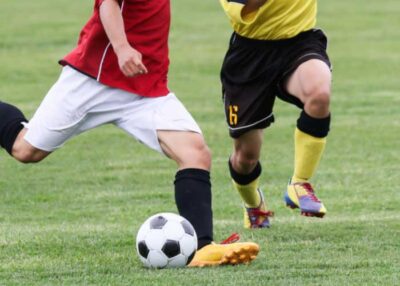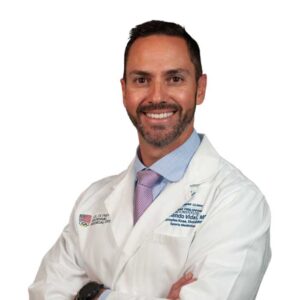What are growth plates?
Growth plates are an area of cartridge located near the end of long bones. Each bone has at least two growth plates, one at each end. They contain rapidly dividing cells that allow bones to become longer and thicker until the end of puberty. As a child ages, hormonal changes cause the growth plates to thin and close and are then replaced by solid bone, ending bone growth. An “open” growth plate refers to a plate which is still signaling the bone to grow.
What is an ACL?
The ACL is the major stabilizing ligament in the center of the knee. It is the ligament that allows an athlete to cut, pivot, change direction and rapidly accelerate and decelerate. It serves a critical function in the knee and in addition to stabilizing the knee is an important protector of the articular cartilage and meniscus.
How is the ACL different in children and teens?
There are four main ligaments that stabilize the knee. The anterior cruciate ligament or ACL stabilizes the knee in two ways: First, the ACL acts as a passive restraint to larger movements between the femur (thigh bone) and tibia (shin bone.) Second, the ACL has mechanically sensitive nerve receptors which sense the position of a joint. When the knee starts to exceed the normal range or speed, these sensors send a signal to the brain which, in turn, stimulates the appropriate muscle to help stabilize the joint.
An ACL in adults and children has the same job in stabilizing the knee, the difference is how it is treated if there is an injury. Dr. Armando Vidal, pediatric orthopedic knee specialist has extensive experience in successfully treating young patients in Vail, Aspen and the surrounding Denver, Colorado communities who have torn or injured their ACL.

How is an ACL Reconstruction done in children and teens?
Dr. Vidal specializes in ACL reconstruction for all ages. The specific technique for repair or reconstruction depends on the patient’s age, health and expected outcome. In children and teens, he might apply one of the following techniques:
- Modified Macintosh – Preferred technique for patients who are pre-pubescent, whose growth plate has not closed. The procedure utilizes a strip of the iliotibial tractus. This band of tissue, also known as Maissiat’s band or ITB band, is found on the outside of the thigh. The ITB is wrapped around the femur and secured with sutures. This band will take over the knee stabilization job of the ACL while leaving the growth plate untouched.
- All-epiphyseal – This technique is also used for skeletally immature patients, which places the tendon and its tunnels and fixation all within the child’s epiphysis, (part of the end of the long bone) leaving the growth plates untouched.
- Transphyseal – Utilized for patients who are older and are closer to puberty, if not past. Dr. Vidal utilizes the patient’s quadriceps tendon or a hamstring graft to recreate the ACL. The graft is placed across the growth plate and secured through a tiny tunnel made in the tibia (shin bone) and then secured to the femur.
- Hybrid – In many cases a hybrid of these techniques (all-epiphyseal on femur and transphyseal on tibia) can be used depending on the athlete’s level of skeletal maturity.
How long is the recovery for a pediatric ACL Reconstruction?
Dr. Vidal usually performs pediatric ACL reconstruction on an outpatient basis. Patients can go home a few hours after surgery. It is standard for the patient to be on crutches for 1-2 weeks post-surgery, until they gain muscle control and can walk without pain in the brace. Patients will work with Dr. Vidal’s team of physical therapists to maximize their recovery and return them to their sporting activities in about 6-9 months.
Pediatric ACL Surgeon
The ACL is a well known ligament that is often injured during athletics, however, it can be injured or damaged in children and younger patients as well. In these cases, a professional must be contacted because regular surgery may cause the growth plate to be damaged, resulting in less growth than normal. Pediatric ACL specialist, Doctor Armando Vidal has extensive experience diagnosing and treating young patients in Vail, Aspen, and the surrounding Denver, Colorado communities in a number of ways to ensure that growth is not affected. Contact Dr. Vidal’s team today!

Locations
180 S Frontage Rd W
Vail, CO 81657
226 Lusher Court
Ste 101
Frisco, CO 80443
322 Beard Creek Road
Edwards, CO 81632


